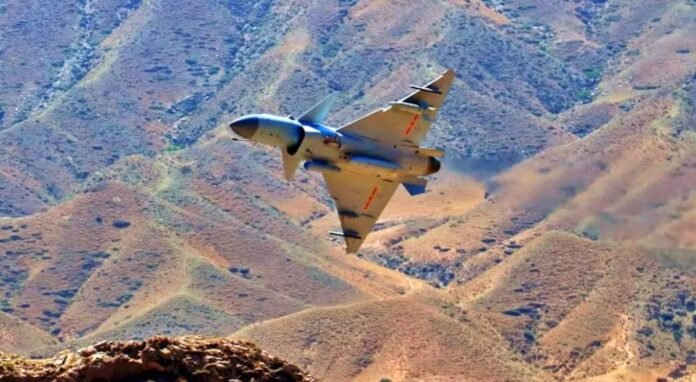
Key Points
- Pakistan Air Force (PAF) has ramped up combat air patrols over Karachi, Islamabad, Rawalpindi, and Skardu following the Pahalgam terror attack in India.
- Indian Air Force (IAF) is conducting Exercise Aakraman, a large-scale drill involving Rafale, Su-30MKI, and Tejas jets, simulating deep-strike and precision bombing missions.
- Pakistan has activated forward airbases, repositioned F-16 fighters to Gwadar’s Pasni Airfield to evade India’s S-400 radar, and deployed JF-17 and J-10 fighters near the border.
- Pakistani military and political leaders, including Defence Minister Khawaja Asif, have issued repeated warnings, including nuclear threats, amid escalating rhetoric.
- Both nations’ armed forces and navies are on high alert, with Pakistan issuing NOTAMs to restrict air and sea operations in sensitive zones.
Islamabad: In the wake of the deadly Pahalgam terror attack that killed 26 Indian tourists, Pakistan has dramatically heightened its military readiness, fearing a possible retaliatory strike from India. The Pakistan Air Force (PAF) has intensified combat air patrols (CAPs) over major cities including Karachi, Islamabad, Rawalpindi, and the strategic Skardu airbase near the Line of Control. These patrols are being flown by advanced JF-17C Block III and J-10CE fighters, equipped with modern Chinese PL-10 and PL-15 air-to-air missiles, and supported by Erieye airborne early warning aircraft.
To shield its most valuable assets, Pakistan has redeployed half of its F-16 Block 52+ fleet to Pasni Airfield near Gwadar, keeping them out of range of India’s powerful S-400 air defense systems. The activation of non-traditional bases like Saidu Sharif in Swat signals a multi-front defensive posture, with the PAF aiming to deter or rapidly respond to any Indian incursion.
India’s ‘Aakraman’ Exercise Signals Offensive Readiness
Simultaneously, the Indian Air Force is conducting Exercise Aakraman, a high-intensity war drill involving its most advanced fighter jets-Rafale, Su-30MKI, and LCA Tejas-across multiple terrains, including mountainous regions. The exercise, closely monitored by senior IAF leadership, features complex ground attack, deep-strike, and electronic warfare missions, echoing India’s 2019 Balakot airstrikes. The Navy has also demonstrated operational readiness with live-fire missile tests in the Arabian Sea.
Although officially described as routine, the timing and scale of these exercises-coming days after the Pahalgam attack-have heightened Pakistani fears of imminent Indian military action.
Political and Military Rhetoric Escalates
Pakistan’s Defence Minister Khawaja Asif has publicly declared that an Indian incursion is “imminent,” warning that Pakistan’s nuclear arsenal would be used only if the nation’s existence is threatened. Other senior leaders have echoed these threats, while military convoys and advanced weaponry have been moved to reinforce border positions.
Pakistan has issued NOTAMs (Notice to Airmen/Mariners), restricting air and sea traffic in sensitive areas, and its Navy has launched live-fire exercises in the Arabian Sea. Karachi, as the country’s economic and naval hub, is under especially tight surveillance, with CAPs protecting vital infrastructure and sea routes.
Strategic Calculations and Regional Risks
The current standoff marks one of the most dangerous escalations since the 2019 Pulwama-Balakot crisis. India’s deployment of S-400 air defense systems and its new generation of fighter jets have shifted the balance of airpower, prompting Pakistan to rethink its defensive strategies. Both sides are now in a state of heightened alert, with intelligence and surveillance assets monitoring each other’s movements closely.
“The PAF’s shift to offensive defense mode and India’s Aakraman exercise have created a precarious standoff, raising concerns about potential escalation between the nuclear-armed neighbors,” noted a defense analyst.
What’s Next?
With both militaries on edge, diplomatic channels are under strain and global powers are urging restraint. The situation remains volatile, with any miscalculation risking a rapid escalation.
The subcontinent faces its gravest security crisis in years, as both India and Pakistan brace for potential confrontation in the aftermath of the Pahalgam terror attack.

















































